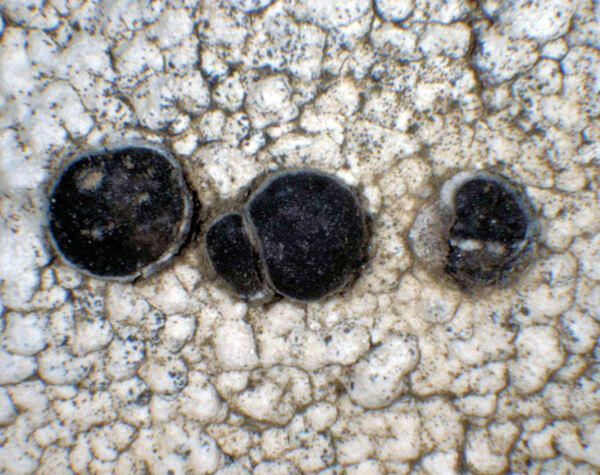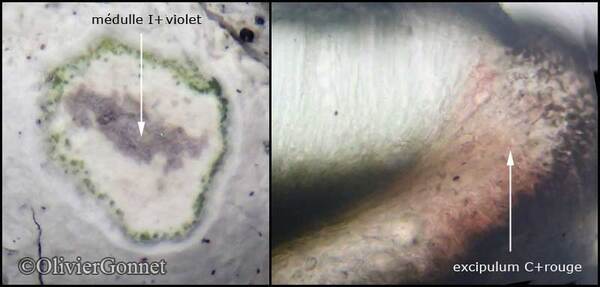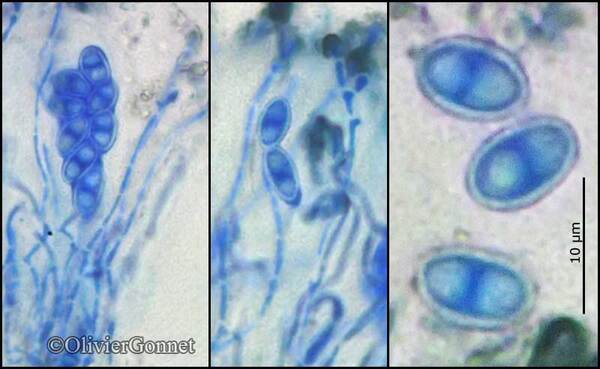Lecidea speirodes Nyl.
Flora, 68: 44, 1885.
Synonyms: Lecidea contigua var. subcretacea Arnold; Lecidea decorosa Arnold; Lecidea subcretacea (Arnold) P. Syd.; Lecidea subumbonata sensu Arnold et Lettau non Nyl.
Distribution: N - TAA (Hertel & Schuhwerk 2010, Nascimbene & al. 2022), Piem (TSB 33167), VA (Piervittori & Isocrono 1999), Lig. C - Abr (Nimis & Tretiach 1999, Gheza & al. 2021).
Description: Thallus crustose, episubstratic, continuous or rimose, chalky white, often with a bluish tinge, 0.2-1.2 mm thick, most often without a clear prothallus, rarely delimited by a thin dark prothalline line. Medulla white, I+ deep blue. Apothecia lecideine, black, epruinose, (0.2-)0.4-2(-3) mm across, with a flat to finally strongly convex disc and a persistent, raised, wavy proper margin. Proper exciple green-black to brown-black along a thin outer rim, colourless or pale grey within, C+ orange-red; epithecium green-black, K-; hymenium bright blue green, rarely brownish or colourless, 50-70 µm high; paraphyses coherent, simple or forked in upper part, c. 2 µm thick at mid-level, the apical cells hardly swollen, to 2.6 µm wide; hypothecium dark brown, K-. Asci 8-spored, clavate, Lecidea-type. Ascospores 1-celled but often pseudodiblastic, hyaline, ellipsoid, 6-12 x 3.5-6.5 µm, not halonate, thin-walled. Pycnidia black, globose, immersed. Conidia bacilliform, 5-15 x 0.8-1.5 µm. Photobiont chlorococcoid. Spot tests: thallus K- or K+ faintly yellow, C-, KC-, P-. Chemistry: thallus and exciple with 2'-O-methylanziaic acid. Note: a lichen known from the central and southern European mountains (Alps, Pyrenees, Cordillera Cantabrica in Spain, Tatra Mountains), found on steeply inclined, superficially decalcified calciferous rocks or on lime-containing siliceous rocks, with optimum in upland areas, up to the nival belt in the Alps. The world distribution was mapped by Hertel (2006). The record from Abruzzo (Gran Sasso) is the southernmost in Europe.
Growth form: Crustose
Substrata: rocks
Photobiont: green algae other than Trentepohlia
Reproductive strategy: mainly sexual
Commonnes-rarity: (info)
Alpine belt: rather rare
Subalpine belt: rare
Oromediterranean belt: absent
Montane belt: absent
Submediterranean belt: absent
Padanian area: absent
Humid submediterranean belt: absent
Humid mediterranean belt: absent
Dry mediterranean belt: absent
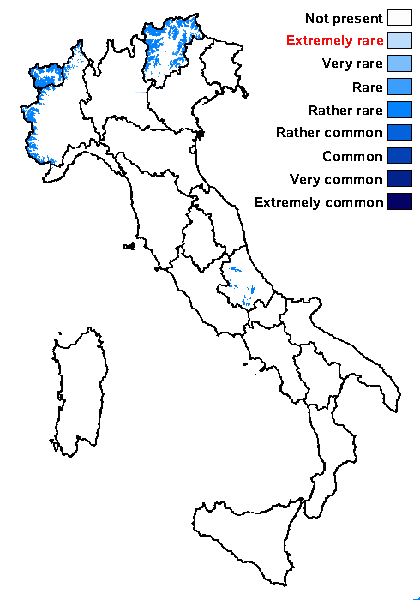
Predictive model
Herbarium samples
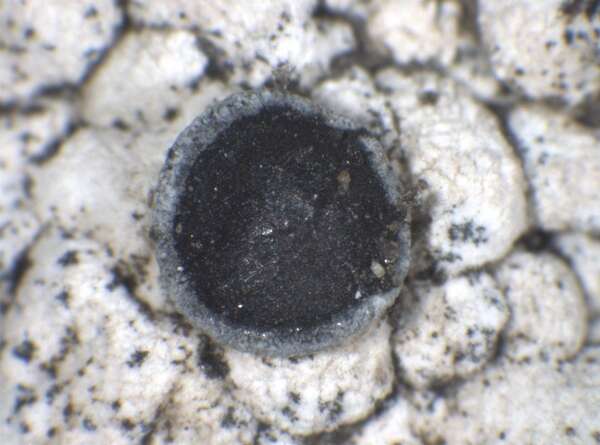

P.L. Nimis; Owner: Department of Life Sciences, University of Trieste
Herbarium: TSB (30296)
2003/03/12
young apothecium
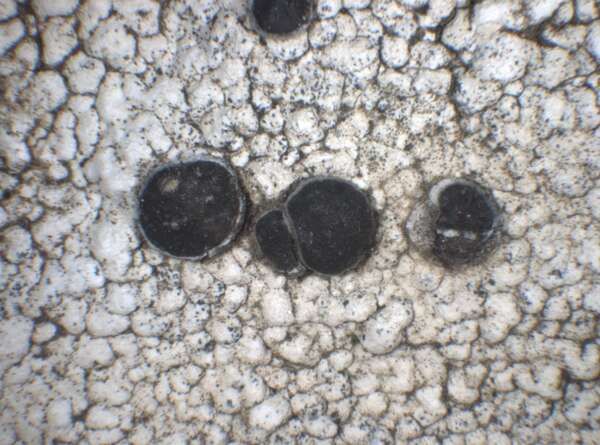

P.L. Nimis; Owner: Department of Life Sciences, University of Trieste
Herbarium: TSB (30296)
2003/03/12
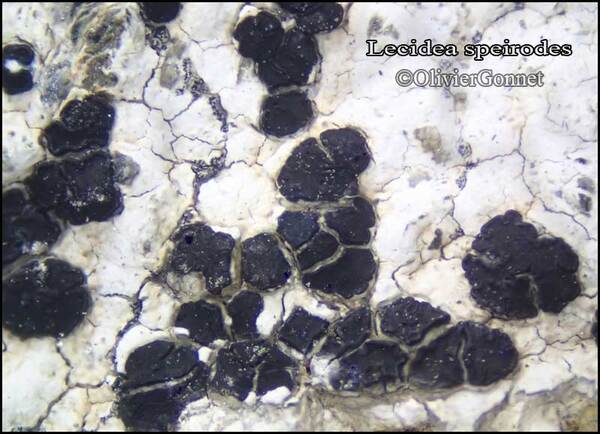
Courtesy Danièle et Olivier Gonnet - Source: https://www.afl-lichenologie.fr/Photos_AFL/Photos_AFL_L/Texte_L_4/Lecidea_speirodes.htm
France, Col de l'Iseran, lac de Cema, 2760 m - Savoie
3/9/2014
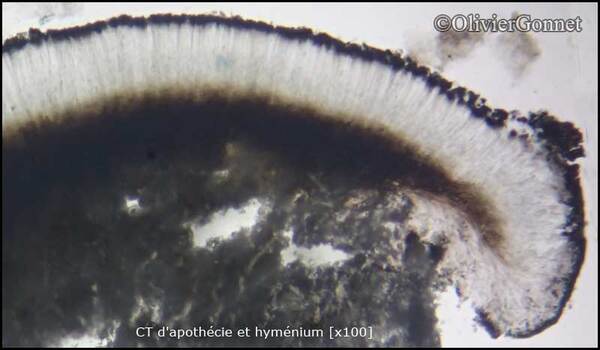
Courtesy Danièle et Olivier Gonnet - Source: https://www.afl-lichenologie.fr/Photos_AFL/Photos_AFL_L/Texte_L_4/Lecidea_speirodes.htm
France, Col de l'Iseran, lac de Cema, 2760 m - Savoie
3/9/2014
Growth form: Crustose
Substrata: rocks
Photobiont: green algae other than Trentepohlia
Reproductive strategy: mainly sexual
Commonnes-rarity: (info)
Alpine belt: rather rare
Subalpine belt: rare
Oromediterranean belt: absent
Montane belt: absent
Submediterranean belt: absent
Padanian area: absent
Humid submediterranean belt: absent
Humid mediterranean belt: absent
Dry mediterranean belt: absent

Predictive model
| Herbarium samples |


P.L. Nimis; Owner: Department of Life Sciences, University of Trieste
Herbarium: TSB (30296)
2003/03/12
young apothecium


P.L. Nimis; Owner: Department of Life Sciences, University of Trieste
Herbarium: TSB (30296)
2003/03/12

Courtesy Danièle et Olivier Gonnet - Source: https://www.afl-lichenologie.fr/Photos_AFL/Photos_AFL_L/Texte_L_4/Lecidea_speirodes.htm
France, Col de l'Iseran, lac de Cema, 2760 m - Savoie
3/9/2014

 Index Fungorum
Index Fungorum
 GBIF
GBIF
